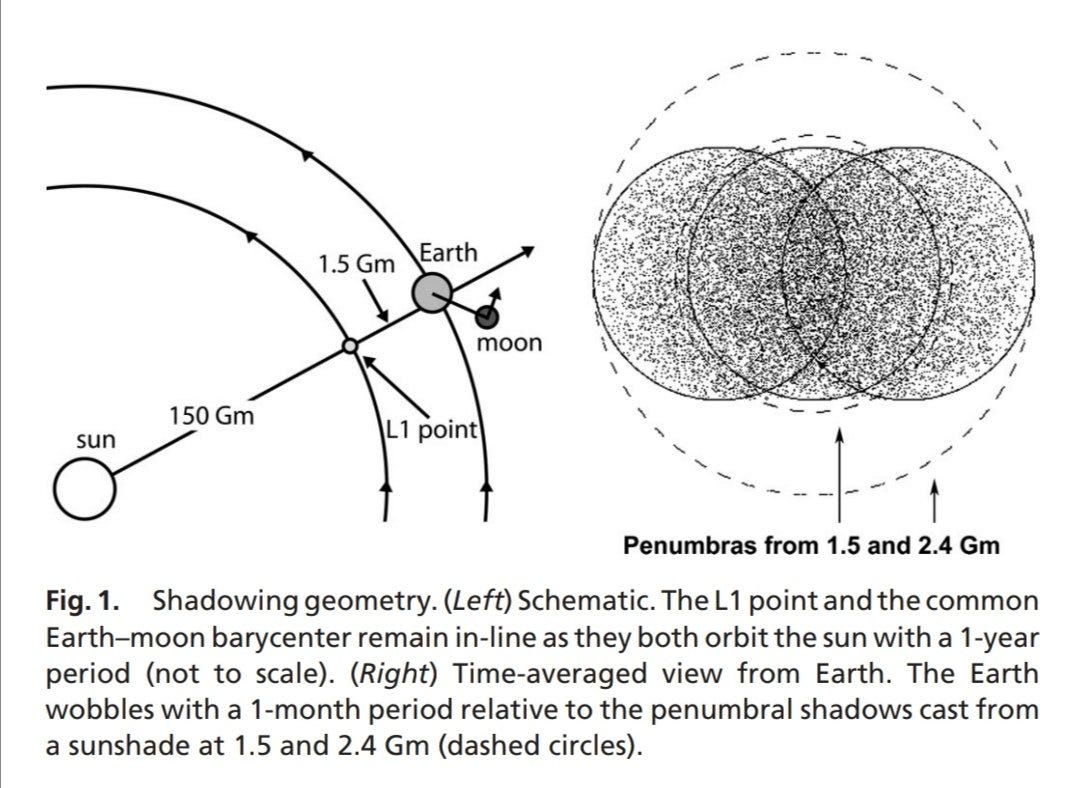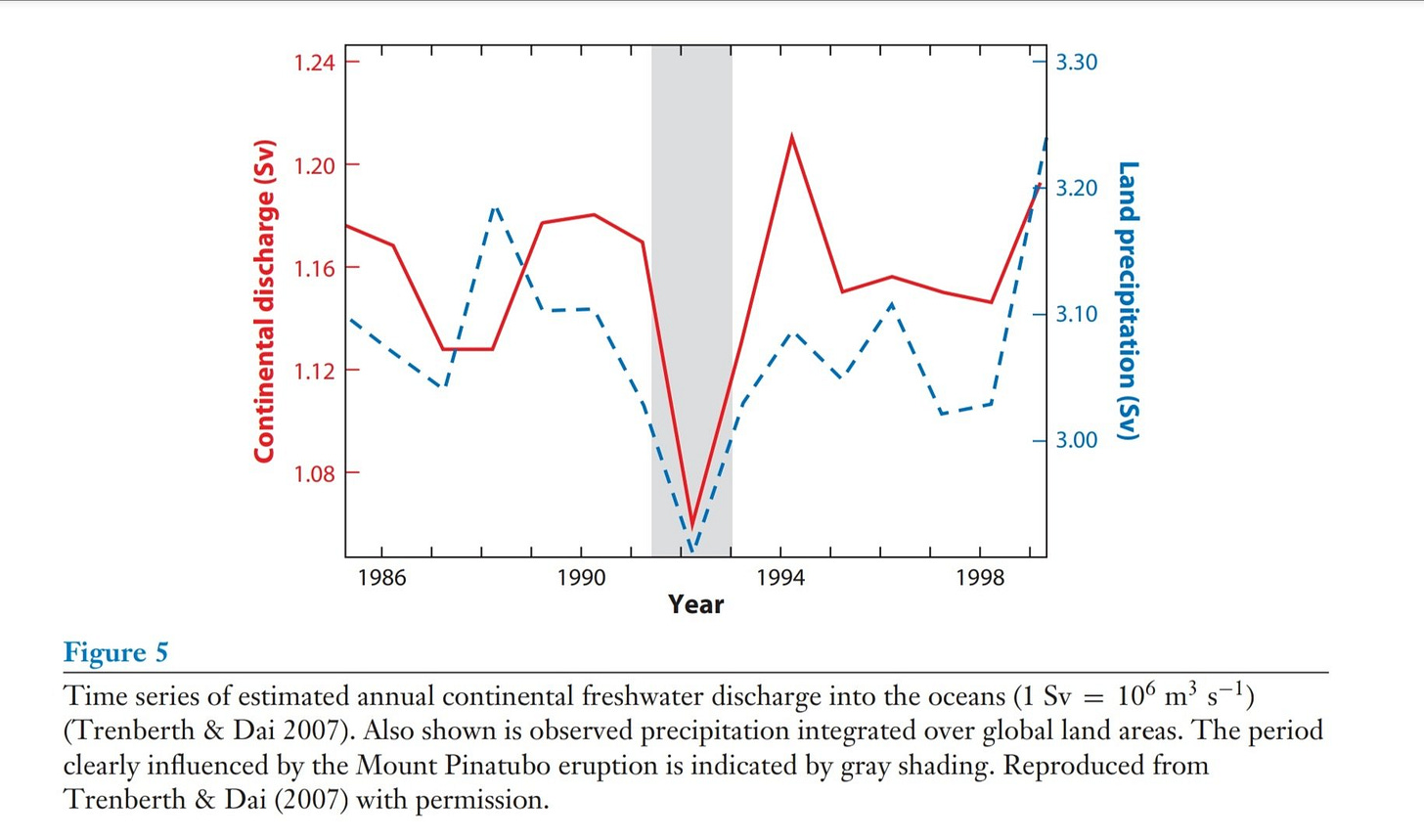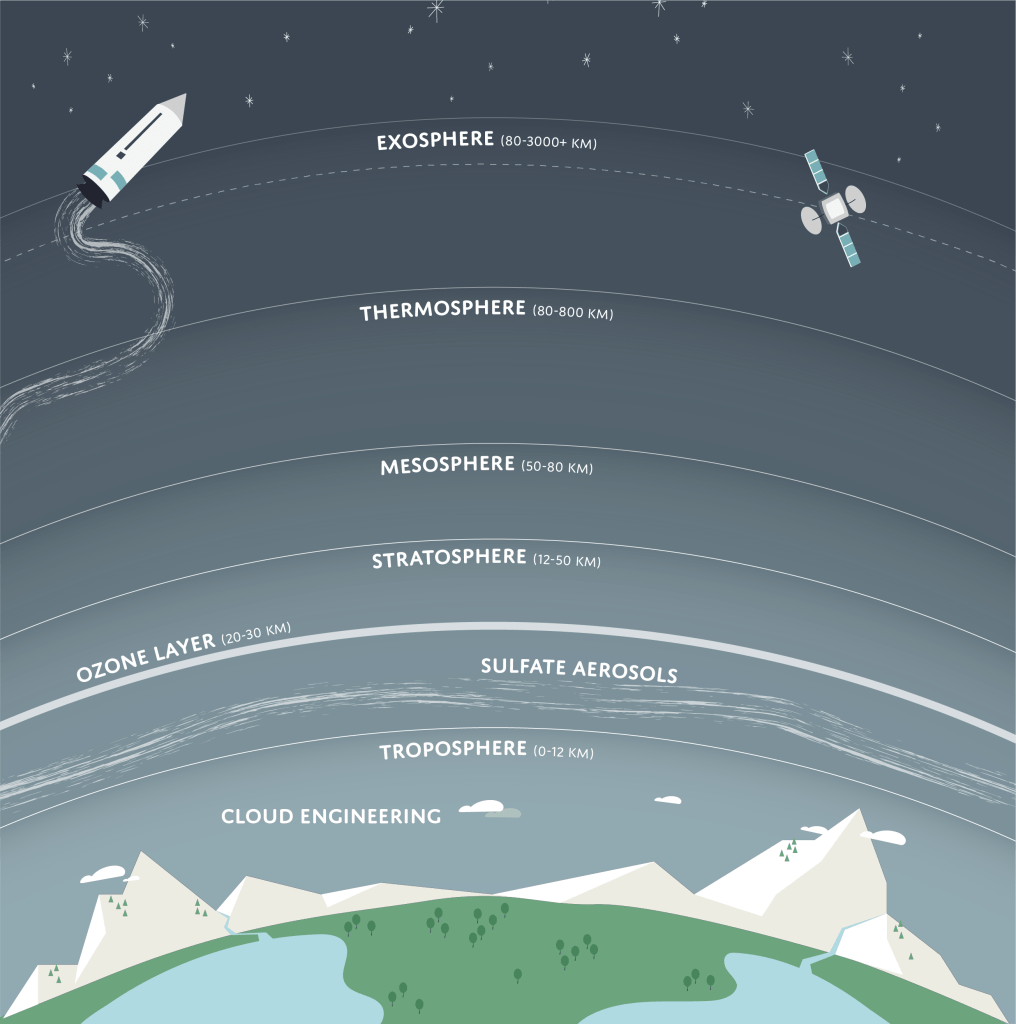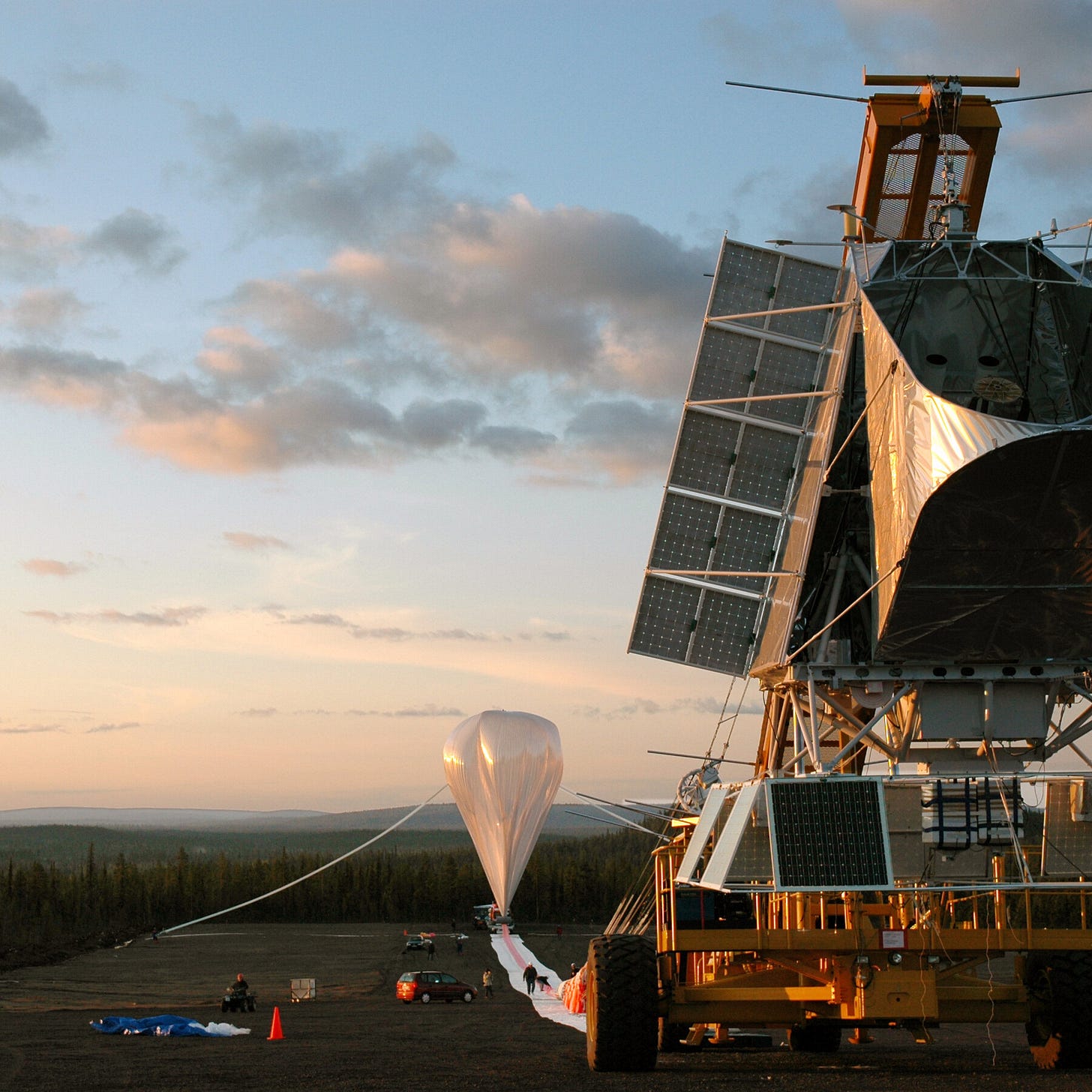Shading the truth & dimming the sun
Why the UK government is right to investigate geo-engineering.
And then we will cloud the vault of heaven, so they cannot see what we do.
At the time of writing, my dog is by my side under the bright directionless haze of a warm-ish spring day in Ireland. She runs orbits around me, insects flock around my head and twin trails of muck guide my way up a country road on the regular walk. The smell from the departed muck-tracking tractor aside, it's a bucolic, peaceful scene. But a chilly one: The sun is muffled through the usual haze of the Irish sky, more white than blue, and the air still has a bite from the night before.
So why in God's name would you want to dim the sun?
Just next door, His Majesty's UK government wants to do exactly that, giving the go-ahead to 50 million quid of funding for research into geoengineering, or active planetary temperature management, on top of another 11 million already committed. Small sums, but so anaemic is funding for geoengineering that even this paltry haul would make the UK a world leader.
But a world leader in what?
The sun-facing side of the Earth absorbs an average of 240 Watts of power per square metre, with much else besides reflected away in one form or another. Global warming (or anthropogenic global warming, or the greenhouse effect, take your pick) is the process by which the addition of carbon dioxide to the atmosphere slightly increases the net absorption of solar energy, by limiting what gets reflected or radiated back into space. Not by much: Double the levels of CO2 and the radiative forcing would only increase by 4 Watts out of that 240, but small changes matter when they occur on a suitably vast scale.
Just for the record, the sum total of mankind's CO2-raising influence on this number is an increase in radiative forcing of… 1.5 Watts per square metre. This doesn't sound so bad.
Of course, multiply it by the sunlit surface area of the Earth and that little number becomes about 256 trillion Watts, or a 256 with twelve zeroes after it. Or the thermal output of fifty thousand nuclear power stations. That sounds a little more impressive.
And as the media will no doubt be reminding you the statutory amount of times a day, we need to reduce our carbon emissions and reach net zero. Somehow.
But speak it softly…
What if we can't?
1: The shadow of questions we can't ask.
Geo-engineering, and a conversation with consequences.
Many years ago I was a graduate student in the University of Manchester. My remit covered lasers, hypersonic airflow and creating synthetic pulse jets with boxes of trapped lightning; all normal workaday stuff.
Then one day a conversation occurred that may become apocalyptically relevant in the coming decades.
I found myself chatting to a glum looking academic next to a tank of water and the austere black cylinders of a Phase Doppler Anemometry unit, aiming criss-crossing lasers at a point somewhere above it. I was chatting because, well, I wanted to use that PDA unit, but the talk proved to be more illuminating than the lasers.
He was investigating a means of using tailored acoustics to atomize salt water so that a slight breeze would send it skywards in the finest of mists. When I asked him why, he explained that if you can get salt particles into clouds, they act as nucleation points, promoting water droplet formation and creating clouds with more, smaller, droplets. This should make them brighter.
He also explained that because of his involvement in this research he'd been accused of “rocking the boat” and turned down for grant funding, thereby explaining his despondency.
But why was his project so radioactive?
It was because it was linked to reflecting more sunlight back into space, in effect increasing the Earth's albedo and cooling the planet.
It was the first time I had come across the term ‘geo-engineering’, and it seemed so… well, obvious. Why wouldn't anyone want to investigate this, when climate change is a threat we must all hear about daily over our Corn Flakes? It certainly sounded more plausible than installing giant offshore wind turbines with jack-up barges that look ready to moor continents, even if the outcome is a little different.
And that, I suppose, was the problem. Nothing's as dangerous as unconventional wisdom, especially if the conventional sort comes with multi-billion price tags. That sort of money gets territorial, and jealous.
I never did find out what happened to that academic and his worthy, though maligned, research. Maybe now that the UK government has finally decided to fund geoengineering experiments he's had the last laugh. Or maybe he's retired, or moved to the City or works on something less obviously political.
He was shot down because his work questioned the Net Zero doctrine, that all and everything should be aimed narrowly at the reduction of carbon emissions, and because geo-engineering is seen as a threat to bringing emissions to zero.
It's a threat because it dares to ask the forbidden question…
What if we can't?
2: Throwing shade on the impossible ski-slope.
Here, as it stands, is the total amount of CO2 equivalent that we throw into the sky every year, taken from the IPCC synyhesis report. Take a few seconds to study the graph and contrast it with the conventional wisdom that, in order to limit global warming to 2 Celsius above the pre-industrial average, we need to reach global net-zero emissions somewhere between 2050 and 2070. Now look at the gradient of the reduction in emissions & fossil-burning needed to bring this scenario about.
Would you ski down this?
Nope! It’s as if, having being dragged rapidly up the ski-slope by a pommel-lift, launching you skywards like a clattering catapult, you’d been deposited at the peak, only to be invited to then ski down a sheer cliff face. You’d probably react by unclipping the skis (or snowboard, to taste) and walking back down, or just camping at the summit forever, living off what snacks you could scavenge from fellow skiers plummeting to their doom.
And likewise if you were, say, China or India, having power-launched your way out of poverty on a fossil-fuelled steam catapult, would you then wipe the black coal dust off your face, give a Gallic shrug and turn everything off?
The Alchemists
The device you hold, the clothes you wear and the food you eat owe thanks to wizards: People who sniffed the heavy odours of crude oil and hallucinated an entire world in their image.
No, obviously not. It’s clearly absurd to suggest that the roaring flywheel of industrial capitalism, with all its power, potential and rational incentive, would bring the 6 or 7 billion people of the world’s developing nations to the very cusp of prosperity, only to say “nah”. You’d need to find an incentive even more powerful than petroleum-fuelled prosperity to achieve that maddening decarbonization gradient, which is unlikely.
“What about survival?” You might reasonably say, if you were of the mind that climate change is an urgent existential issue, and fair enough… but coal & gas can power an awful lot of air conditioning and irrigation. A chaotic climate probably sharpens the desire for more energy and mobility instead of reducing it.
So let’s put our pessimistic hat on and expect to fail at this. What do we do?
Enter geo-engineering.
The key requirements made of geoengineering are firstly, it should be fast, because it’s an emergency measure; a break-the-glass-and-cool-the-planet button you hit when the basement is on fire and you don’t think you can make it down the stairwell. Secondly, it should be cheap, because it’ll never scale globally otherwise, and you can’t sell electric cars or tofu curry to fund it like other green initiatives. Thirdly, you need to be able to switch it off at will, because it’s never been tried before and so it’d be foolhardy to bet the farm on it if you couldn't stop it once started.
What options have we? Fear not, because there are several. Keep your hands off the doomsday button for a moment, we may still have time…
3: The Colour Out Of Space
We’ll start with the most sci-fi solution of all: Why not launch a bunch of big mirrors up into space, or at least some kind of parasol to dim the sun’s rays directly? It might sound a bit far fetched but, well, we know it works on the personal scale.
But can you pitch a barbecue parasol over the entire world?
Remember the scale of the problem: The Earth absorbs 240 Watts per square metre in sunlight hours, and we’re trying to mitigate a few Watts increase. Small percentages, true, but the Earth is big and you’d need an awful lot of space mirrors.
You'd place them either in low orbit a few hundred kilometres overhead, which is easy to reach but would only be in sunlight half the time, or the L1 Lagrange point between the Earth and sun, a rather more challenging 1.5 million kilometres away. The Lagrange point would in principle always be in between the sun and ourselves, and so on the face of it is a better option, but there are other factors that make this less than feasible.
Firstly, let’s explain what a Lagrange point is: It’s a pseudo-stable orbital zone in-between two bodies. A satellite can ‘orbit’ the L1 point even though there’s nothing in it, by interacting with the effects of the sun & Earth on it’s orbital mechanics.
Basically, if an object in solar orbit at L1 is pulled towards the Earth, it ascends slightly but retains the same velocity, so its orbital period lengthens, pulling it backwards relative to Earth. At this point it’s not going fast enough to keep this orbital altitude around the sun, so down it will drop through its orbital parabola until its closer to the sun, exchanging potential energy for kinetic energy and therefore speeding up again. Once it does this it once again passes between Earth and sun, where the Earth’s gravitational influence pulls it up again and the cycle begins anew. It’s counter-intuitive, but in this way you can ‘orbit’ a zone with nothing in it. This is how a Lagrange point can capture things in very slow elongated orbits.
These orbits are not particularly stable though, so for a spacecraft to stay in the L1 zone it needs station-keeping, meaning a loss of mass from reaction thrusters and therefore a finite life. The fact that any solar shade would need to keep in an exceptionally tight L1 orbit to align with the Earth would mean that this would get used a lot, so not only would the solar shades in the L1 zone be more expensive to put up there, but they wouldn’t last very long.
Low orbit it is then. Low orbit is increasingly easy to reach (though still expensive), but has the problem of overcrowding: You don’t want satellites smashing into each other up there, so you need to be careful. How many will we need?
Well we have 250 Trillion Watts to cancel out, so the swarms of mirrors (or reflective particles) would need to be extensive. Just to keep pace with the current rate of increase in radiative forcing caused by the new CO2 we release would mean launching 10,000 square kilometres of mirror every year, and keeping it up in perpetuity, or at least until the much-ballyhoo’d Net Zero Day arrives (will we get a public holiday? Will there be cake?)
That’s about 1 square kilometre of mirror an hour, by the way. Now, reflective surfaces can be thin and light (a carbon-carbon mesh with a molybdenum coating would be about 5g per square metre, for example), so if you could find a way of unfurling all of that mirror then the real ask is ‘only’ about 10 tons of mirror a hour, if you assume that half its weight is structural stiffening. A SpaceX Falcon 9 would get you that much, and there were 134 of those launched last year alone… so if we can multiply that rate by 65 times then we’re sorted.
I’m being a bit mean with that last statement, but at this point it’s worth checking out Peter Hague’s delightful Mass Value Report, in which he tracks this very thing, and finds out that it could be on an exponential growth trajectory, if we can just keep the impetus going on new launch technologies…
Anyway, that’s method one. What about method two?
4: Selling Sunset
Sometimes, nature shows us the way.
On June 15th, 1991, Mount Pinatubo in the Philippines blew it’s top. Arriving just before the era of the smartphone and long before the time of the consumer drone, it was well-photographed but not garishly so. No selfie stick-wielding tourists at the mountain top were vaporised, but the blast still claimed 847 lives and left ten thousand people homeless. This toll in lives was a testament to the staggering violence of the eruption, as it had been foreshadowed extensively over the previous months and days, with earthquakes, fissures and the extrusion of a small lava dome. The first big eruption happened just three days earlier on June 12th, with an ash column sent fully 19 kilometres into the atmosphere. More blasts continued that night and into the next day, seismic activity ratcheted up and on Saturday, June 15th, the mountain exploded.
Ash was sent fully 40 kilometres up into the atmosphere, the countryside was greyed and smothered, valleys were filled, tens of thousands were evacuated and hundreds died under roofs collapsing under the weight of ash falling from above. Day turned to night and for a while, the apocalypse had arrived.
Mount Pinatubo was many things; a tragedy, a vision, an awesome statement of our insignificance against nature’s power. But it was one more…
It was a vast geo-engineering trial run.
Sulphate particles, blasted unceremoniously into the stratosphere, spread on the jet stream and blanketed the Earth that year. Impossible to see during the day, it lent spectacular sunsets as the invisible particles scattered the light in unfamiliar ways. The impact was a global radiative cooling of 4 Watts per square metre, briefly throwing the world back into a pre-industrial solar environment. The world was measurably cooled, and global precipitation dropped.
Could we do the same, on a smaller scale, if we needed to? Yes.
A range of particle types are available for this unusual task, but the most well-investigated are sulphate particles, and the influence of stratospheric sulphates has been studied, albeit not with deliberate injection. Altitude and particle size is important: Inject them into the troposphere, the thick layer of atmosphere we live in, and they’ll fall earthwards soon after. Inject them into the stratosphere however, the home of thin air, polar vortices and gigantic mixing layers, and the particles can stay up for a year or more, reflecting sunlight all the while. Small particles stay up for longer but also have different effects on light emission; tiny 0.1 micrometer particles, for example, are good at scattering incoming energy but have no effect on long wavelengths. Larger particles scatter incoming radiant energy poorly but are good with longer wavelengths, and so-on. Tuning the right mix of chemicals, particle size, altitude and location would be crucial for any deliberate use of stratospheric sulphates.
But they do work!
A 2008 study estimated that if small particle sizes are chosen a mere 1.5 million tons a year of fine sulphates, injected into the stratosphere, could offset up to 4 Watts per square metre of radiative forcing globally: Now consider that all of humanity’s CO2 emissions to date have only effected a 1.5 Watt per square metre increase, and you’ll soon see the power of this!
A point of comparison: Since pre-industrial times, our species has thrown about 2.5 trillon tons (or 2.5 with twelve zeroes) of CO2 into the atmosphere. If a quantity of sulphate particles millions of times smaller can mitigate that, even if only for a year or two, that is powerful magic indeed.
And 1.5 million tons of sulphur per annum isn’t even that much. In 2024, global sulphur production was 85 million tons, most of which is an industrial byproduct. It’s one of the most common chemical elements found in nature, which is why it’s not unusual to see volcanoes fart huge quantities skywards on occasion. If we were to do it deliberately we’d have scores of options; weather balloons, high altitude pressurised hoses shackled to balloons, aircraft… it would be a big airlift, but not so big on the grand scheme of things. You could have a significant effect with only a thousand tons a day, spread across multiple deployment sites.
There are likely side-effects, of course, none of which are fully explored: As Mt. Pinatubo showed, such measures would have an effect on rainfall. There’s also the possibility that the extra surface area provided by stratospheric aerosols could enhance chlorine activation from CFCs, and potentially delay ozone layer repair.
There is an answer to all of this, which is: Test & experimentation. Small-scale trials are not to be feared with a technology of such power. Better to start small now, and proceed with earned knowledge, than for someone to panic and let rip at industrial scale in a few decades.
Knowledge is power.
It might be even more valuable if we can localise it. Chilling the polar regions during summer would be an achievement worth striving for, though difficult: In winter the great spinning sentry that is the stratospheric polar vortex guards the jetstream in this chilly plane and would capture aerosols, but albedo reduction is useless in the long polar night, and the vortex breaks up in spring.
If we could figure out how to chill a polar summer that would be useful, calming the ragged seasonal breathing of the cryosphere with the exhalation of volcanoes.
But there’s more we can do with sulphate particles, and Mount Pinatubo wasn’t the only natural experiment in recent history…
5: Cloud Atlas
Another trial occurred a few years ago, as January 1st 2020 heralded the birth of a new decade, for on this date an obscure piece of legislation, ‘IMO2020’ was activated, and another geo-engineering experiment was accidentally kicked into motion.
Keep reading with a 7-day free trial
Subscribe to Incautious Optimism to keep reading this post and get 7 days of free access to the full post archives.















